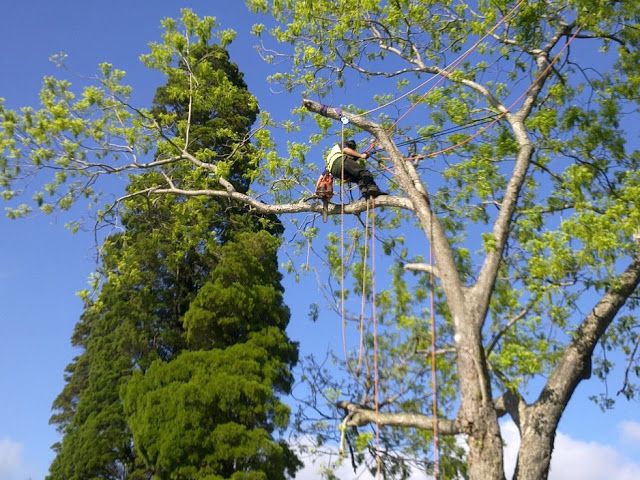

 To most people, there’s no difference between tree pruning and tree lopping. What they’ve never realized is that tree lopping is a pruning exercise that has harmful effects on trees. Tree lopping is a common practice among homeowners despite being a harmful pruning technique. What is it exactly? Well, this is a pruning technique that involves cutting off lateral tree branches to reduce the size of a tree. Those who utilize this method argue that it helps to deal with the safety issues posed by large trees on their property.
To most people, there’s no difference between tree pruning and tree lopping. What they’ve never realized is that tree lopping is a pruning exercise that has harmful effects on trees. Tree lopping is a common practice among homeowners despite being a harmful pruning technique. What is it exactly? Well, this is a pruning technique that involves cutting off lateral tree branches to reduce the size of a tree. Those who utilize this method argue that it helps to deal with the safety issues posed by large trees on their property.
It’s important to note that tree lopping may be necessary at times especially when the goal is to improve the health of a tree. In this case, tree lopping allows a tree to be pruned back to its healthy state before it can re-grow from there. Lopping is also used to thin out the tree’s canopy to allow sunlight to get through and reach smaller plants. This must, however, done without compromising the structural integrity of the trees. Even with such benefits, lopping has its disadvantages. Here are some of the reasons why you should avoid tree lopping.
It Stresses Trees
The leaves are of great significance when it comes to the growth and health of a tree. Tree lopping usually involves removing between 50 and 100 percent of the leaf-bearing crown which leaves the tree stressed. After lopping a tree, you’ll see it activating latent buds which in turn force the growth of multiple shoots. This are survival mechanisms whereby the tree is trying to generate a new crop of leaves. Tree lopping leaves the tree in a vulnerable state which means insects and diseases can easily infest it.
It Causes Decay
While it may serve as a temporary fix for aesthetic reasons, tree lopping will leave large wounds which trees can’t heal or close. When pruning, one is supposed to cut just beyond the collar of a branch at its point of attachment. The wound that remains at this point can easily heal as trees are biologically equipped with a mechanism to close such a wound. The wounds left when lateral branches are cut expose the wood to decay which spreads down through the branches. The tree eventually dies as a result of the decay.
Tree Lopping Creates Hazards
The new shoots that develop after cutting lateral branches usually grow and develop very quickly. As mentioned, this is a survival mechanism. The problem is that the shoots are not as strong as other branches can break during windy conditions. What was being done to make your tree safer might end up making it more hazardous than before.
Lopping Exposes a Tree to Sunburn
In addition to making food, leaves provide protection to the tree from constant assault from the sun. They absorb most of the heat and light coming from the sun. When you lop your trees, you reduce the number of leaves thereby exposing it to the full glare of the sun. This can cause the back of the tree splitting, some of the branches dying or even lead to cankers.
When you’re looking to find a professional to take care of your trees, we suggest you start with the Tree Contractors Association Of Australia to find a reputable & suitably qualified operator.
